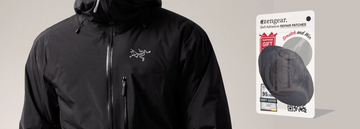Navigating the Mystical Realm: Tips for Hiking in the Fog
by Emily Jannet on Sep 20, 2023
Hiking is an exhilarating outdoor activity that allows you to connect with nature, challenge your limits, and escape the hustle and bustle of everyday life. While many hikers seek the clear blue skies and sunshine to accompany their adventures, there's a unique and mystical allure to hiking in the fog. The fog can transform a familiar trail into an enchanting and mysterious landscape. However, hiking in foggy conditions comes with its own set of challenges and safety concerns. In this article, we'll explore some valuable tips for hiking in the fog, ensuring that your misty mountain adventures remain safe and memorable.
-
Plan Ahead
Before embarking on a foggy hike, thorough planning is essential. Research the trail you intend to hike, check the weather forecast, and gather as much information as possible. Foggy conditions can obscure your surroundings and make navigation challenging, so having a solid plan is crucial. Ensure you know the trail's difficulty level, distance, and any potential hazards.
-
Check Fog Visibility
Determine the visibility level in the fog. Fog can vary from a light mist that slightly obscures your vision to thick, impenetrable banks of mist. Use local weather reports or apps with real-time visibility updates to gauge the current conditions. If visibility is extremely limited, it might be wise to postpone your hike for another day.
-
Gear Up Appropriately
Proper gear is essential when hiking in the fog. Here are some gear considerations:
Layers: Dress in layers to regulate your body temperature. Foggy conditions can make the air feel colder than it actually is.
Waterproof Clothing: Invest in waterproof or water-resistant clothing to stay dry. Moisture in the fog can saturate your clothes and lead to discomfort.
Footwear: Wear waterproof and non-slip hiking boots or shoes and moisture-wicking socks. Trails can become slippery when moist, and wet feet can lead to blisters.
Headlamp/Flashlight: Fog can reduce natural light significantly. Carry a headlamp or flashlight with fresh batteries, even for daytime hikes.
Navigation Tools: Bring a GPS device, compass, or map and compass set. Fog can disorient even the most experienced hikers.
-
Use Auditory Cues
In thick fog, your vision may be severely impaired, but your hearing remains intact. Pay attention to sounds around you. Listen for running water, birdsong, or distant voices to help you maintain your bearings and potentially locate landmarks or fellow hikers.
-
Stay on Marked Trails
In foggy conditions, it's easy to lose your way. Stick to well-marked trails, if possible. Avoid wandering off the path, as it can be difficult to find your way back. If you're uncertain about the trail markers, consider using brightly colored tape to mark your route.
-
Hike with a Group
Hiking with others is generally safer than hiking alone, especially in foggy conditions. A group can provide support, share navigation responsibilities, and offer assistance in case of an emergency. Ensure you have a way to communicate with your hiking companions, such as two-way radios or cell phones with good signal strength.
-
Maintain a Safe Distance
Fog can make it challenging to gauge distances accurately. When hiking in a group, maintain a safe distance from others to avoid collisions or getting separated. Use vocal communication or whistles to stay in contact.
-
Fog Etiquette
In foggy conditions, sound travels differently, and conversations can carry over long distances. Be mindful of your noise level to avoid disturbing the serenity of the fog-covered landscape and fellow hikers.
-
Frequent Breaks
Take regular breaks to assess your surroundings and check your bearings. Use these moments to hydrate and refuel. It's easy to lose track of time and distance in fog, so maintaining a consistent schedule can help you stay on course.
-
Emergency Kit
Carry a well-equipped emergency kit with essentials like a first-aid kit, extra clothing, food, and a space blanket. In foggy conditions, the unexpected can happen, so being prepared for emergencies is crucial.
-
Respect Wildlife
Foggy conditions can bring wildlife closer to the trail. Respect their habitat by observing from a distance and not feeding them. Fog can also muffle sounds, so be cautious when moving through areas known for bear or cougar activity.
-
Know When to Turn Back
Sometimes, conditions can deteriorate rapidly. If the fog thickens to the point where you can't see your surroundings or the trail markers, it's time to consider turning back. Your safety should always be the top priority.
-
Post-Hike Evaluation
After completing your foggy hike, take some time to evaluate your experience. Reflect on what went well and what could be improved for future foggy adventures. Learning from each hike ensures that you become a more experienced and confident foggy-weather hiker.
Conclusion
Hiking in the fog can be an enchanting and ethereal experience, but it also presents unique challenges and safety considerations. By planning ahead, using appropriate gear, staying on marked trails, and following these tips, you can safely navigate the misty trails and immerse yourself in the captivating world of foggy hikes. Remember that the key to a successful foggy hike is preparation, caution, and a deep appreciation for the beauty that shrouds the landscape in misty mystery. So, the next time the fog rolls in, don't hesitate to embrace the adventure of hiking in the fog.





